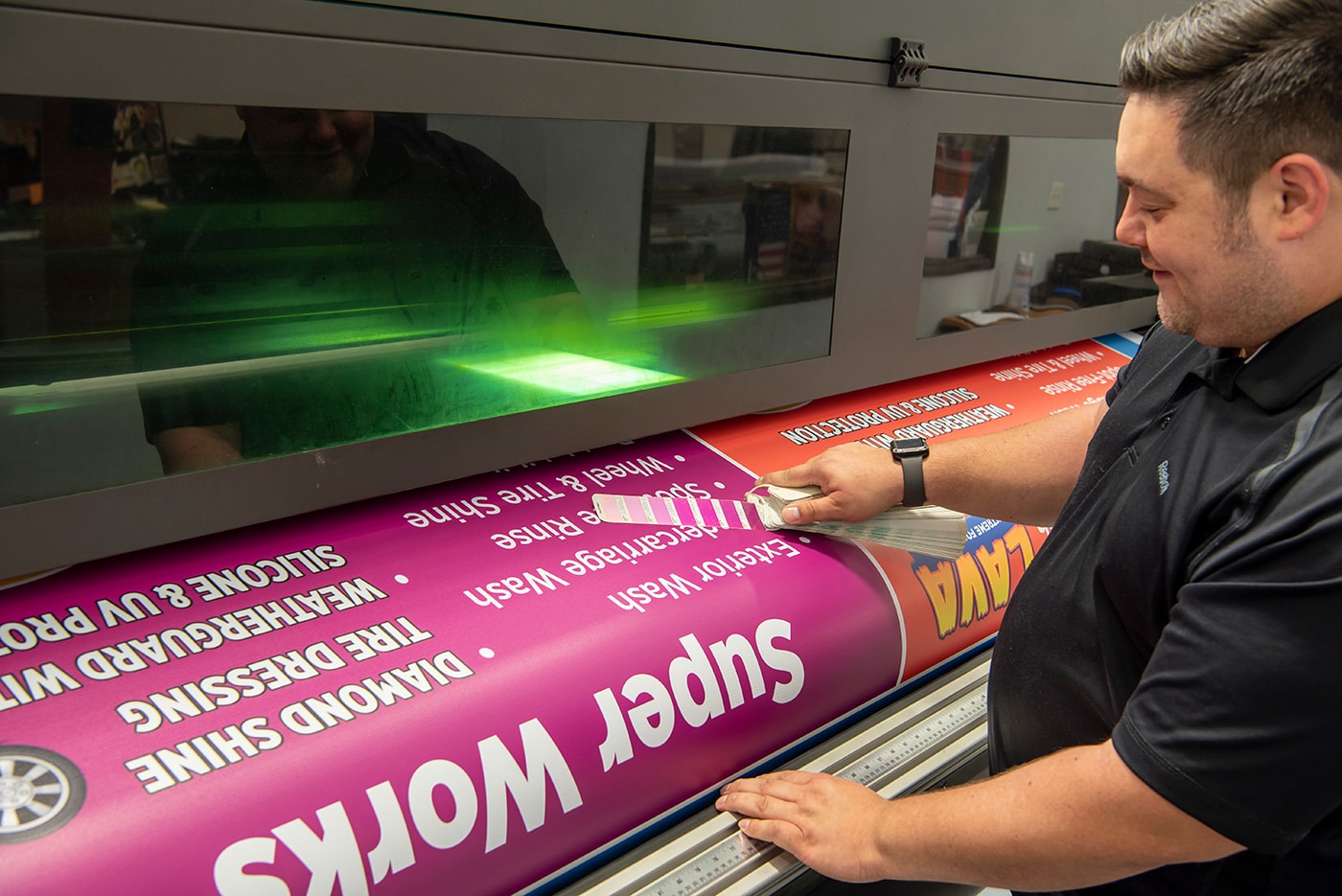Picture this: you and your team have spent hours upon hours meticulously planning your major event or project. You have the details all buttoned up and ready to go – now, all you have to do is wait for your prints to arrive. The day comes, and you open your packages to find nothing but muddy colors and blurry pixels as far as the eye can see.
The last thing you want is for lackluster graphics to overshadow your hard work and investment! In this guide, we’ll go over the best practices for achieving an impeccable, flawless print at any scale.
Start with High-Quality Artwork:
The foundation of a perfect print lies in the quality of your artwork. Ensuring that your graphics and images are high resolution and meet the specifications required for large format printing will make a world of difference, setting the stage for a clear and vibrant final product. Our XL Digital graphics team is here to help every step of the way! Give us a call for specifications on file size and resolution.
Generally, the following guidelines are recommended for billboard production:
*Every project is different, so for exact guidelines please reach out to your print vendor.
- Adobe Photoshop: 300 dpi (min) CMYK (.tif, eps, psd with layers if possible). Scale at 1/4 inch = 1 foot or 1/2 inch = 1 foot.
- Adobe Illustrator: 300 dpi (min) CMYK, .ai, .eps, or high res .pdf, convert all types to outline, link or provide any support files. Please scale at 1 inch = 1 foot.
Missed this step? No worries! Our pre-press team meticulously reviews every file before production, ensuring any issues are caught and addressed promptly.
Understand Color Models in Printing:
There are two main color models you should know when dealing with graphics and printing: CMYK and RGB. CMYK, or, cyan, magenta, yellow, and black (key), is a subtractive color model. These inks combine and absorb certain colors of light and reflect the colors that aren’t absorbed back to the viewer. This model is best suited for print production. RGB, on the other hand, is an additive model that is seen on computer screens, smartphones, and televisions, and it does not translate well to print – often resulting in colors that are dull, muddy, or brownish.
For vibrant colors that match your digital image perfectly, CMYK is the way to go.
Choose the Right File Format:
Opt for file formats that support high-quality and large-scale printing, such as TIFF or PDF. These formats preserve image quality and reduce the risk of pixelation, ensuring your prints maintain sharpness and clarity.
Consider Resolution and Scaling:
Pay attention to resolution and scaling when preparing your artwork. Ensure that images are scaled appropriately for the size of the final print to avoid distortion. A good rule of thumb is to maintain a minimum of 300 DPI for optimal quality.
Our pre-press team at XL Digital will catch any resolution or scaling issues, but this is certainly a good rule to keep in mind.
Select the Right Material:
The choice of printing material significantly influences the final result. Consider the environment in which your prints will be displayed, and choose materials that suit the conditions. Whether it’s a banner, fabric, rigid substrate, or adhesive vinyl, selecting the right material enhances durability and visual appeal.
Not sure where to start? Our team at XL Digital will recommend the material that is best suited for your specific project’s needs.
Proofing is Essential:
Before committing to a large print run, always request a proof or a match-color print. This allows you to review the print for color accuracy, image quality, and overall design. It’s a crucial step in catching any potential issues before the final production.
Work Closely with Your Printer:
Establish a collaborative relationship with your printing partner. Communicate your expectations, share project details, and seek their expertise. A collaborative approach ensures that both parties are aligned, leading to a smoother printing process and superior results.
Consider the Viewing Distance:
Tailor your design to the intended viewing distance. Different applications may require adjustments in font size, image resolution, and overall layout. Understanding the viewing context ensures that your message is conveyed effectively – a huge building wrap downtown and a small retail window graphic will require different specifications.
Invest in Professional Installation:
For large format prints that require installation, enlist the services of professionals. Proper installation ensures that your prints are displayed flawlessly, maintaining the visual impact you intended. At XL Digital, we have built great relationships with installers since we opened for business back in 2002, and we are more than happy to recommend people that we know will get the job done right!
Regular Maintenance and Care:
Large format prints, especially those displayed outdoors, may require periodic maintenance. Be proactive in caring for your prints to extend their lifespan. This includes cleaning, inspecting for damage, and addressing any issues promptly. If you have any questions on ways that you can preserve the lifespan of your project, or any questions on recommended storage methods, give us a call! We know our materials in and out, and would be glad to assist you.
Achieving the perfect large format print may require some consideration, but with the right tools and know-how, your project is sure to turn out beautifully. By following these best practices and tips, your business can ensure that every print project reflects the quality and professionalism that defines your brand.
Have a print project coming up? Contact our sales team at XL Digital Imaging today and let’s make your vision happen! Check out our client center for more helpful info.
(214) 904 – 9400

